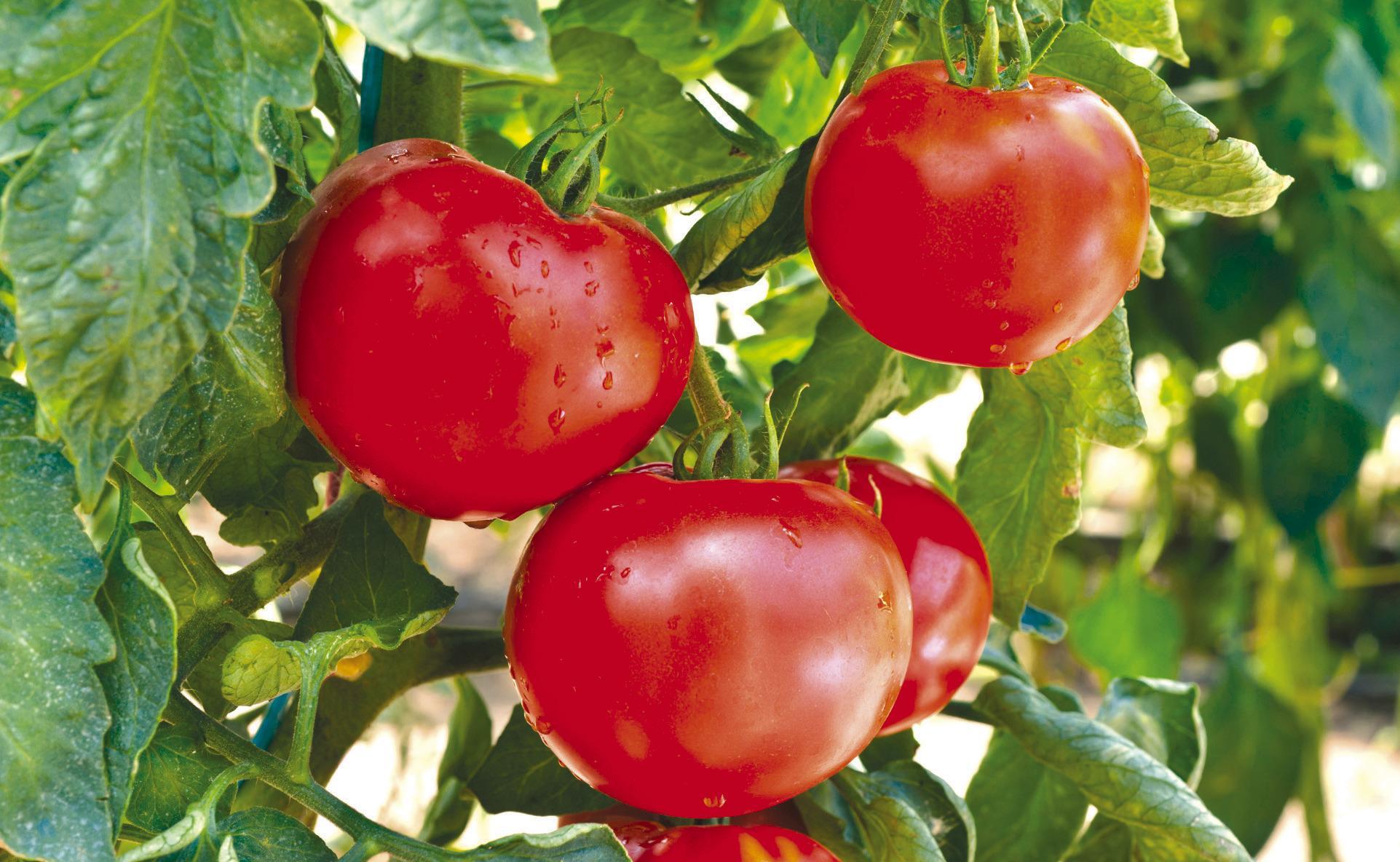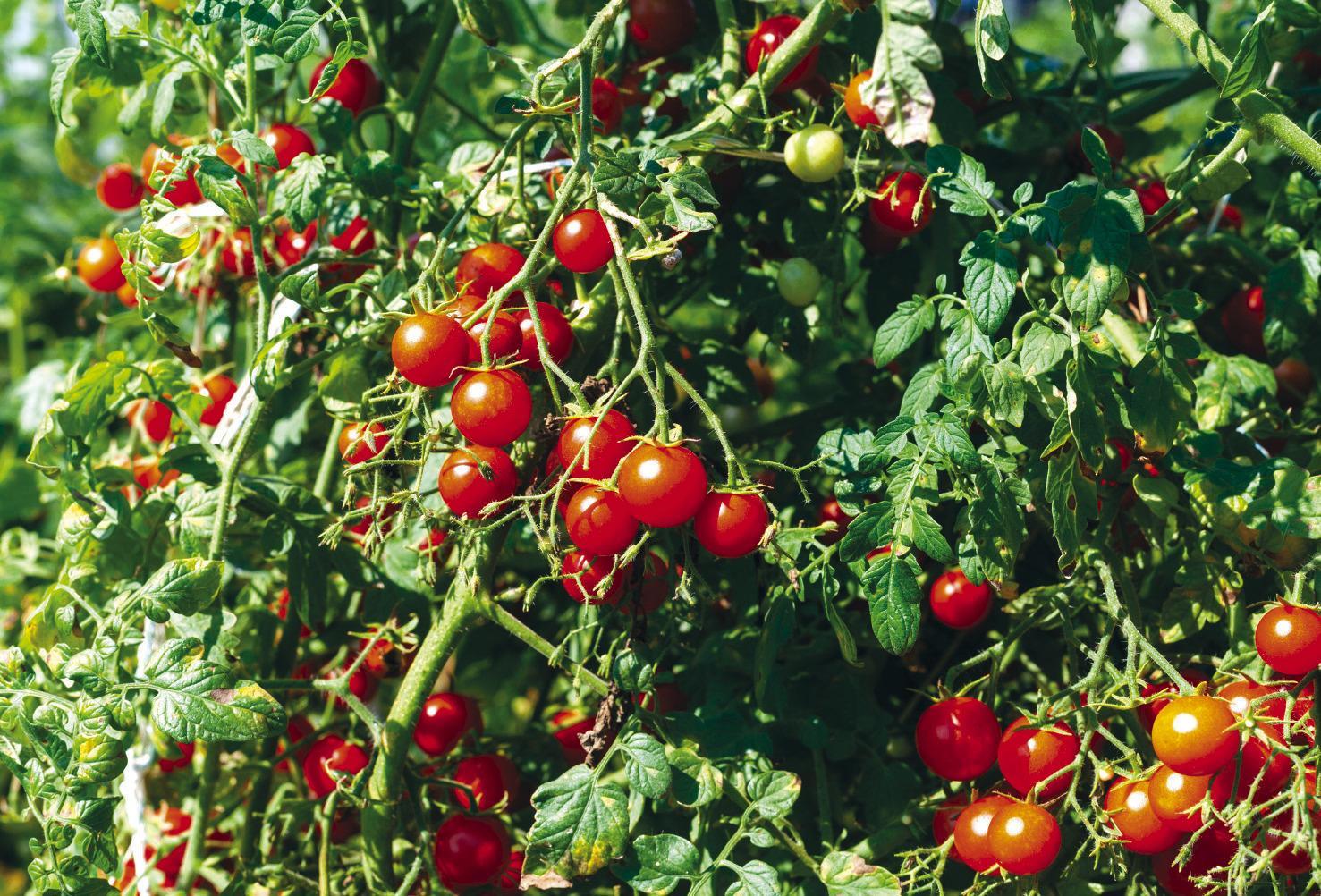
Tomatoes tend to be a make-or-break plant for many gardeners.
Photos by Jennifer Boley

A bountiful tomato crop depends on a variety of things, but following these basics can help increase your chances of success
Divine on the Vine
Just about every gardener will try their hand at growing tomatoes at some point. For some, the art of growing tomatoes can become an obsession. For others who don’t have success growing tomatoes, it may feel like a gardening failure that makes them decide they must just have a black thumb and give up on gardening altogether.
Regardless of where you fall on the tomato gardening spectrum, there are a few tomato knowledge basics that will help you grow healthier plants and enjoy better harvests.
1. Grow the right tomato for your needs.
In the Texas Hill Country, our growing season includes extreme heat and brutal drought conditions. So if you are new to tomato gardening, you might start by selecting one of the 5 Texas Superstar tomato varieties tested to be top performers. These include Tycoon, Dwarf Cherry Surprise, Celebrity, Valley Cat, and Ruby Crush.
Some questions to ask yourself when deciding on what varieties of tomatoes to grow may be: How much space do you have to grow? Do you have a large backyard garden, or a pot on your back patio? Tomatoes self-pollinate, so you don’t need to grow multiple plants.
How will you eat your tomatoes? Do you like cherry tomatoes for quick snacks and salads or big-as-your-face tomatoes to top summer hamburgers?
Do you like flavors you’re familiar with from the grocery store or do you have a more adventurous pallet?
In addition to the Texas Superstar list, locally owned plant nurseries usually have a tomato guru or two who can also give recommendations.
2. Plant deep and feed often.
Tomatoes are most likely the greediest plants in your garden. They need large root systems to soak up all the food and water necessary to produce all those delicious tomatoes. The good news is that tomatoes are one of the few fruits that will produce roots on any part of the stem buried underground, so bury them as deeply as possible. To do this, strip all of the growth from the main stem leaving only a crown with the top few leaves. Then, bury the entire plant leaving only the crown and a few inches below it above ground. That will ensure it grows an impressive root system resulting in a better harvest.
Be sure to feed your tomatoes regularly. Use an organic high-nitrogen fertilizer to support healthy green plant growth early in the season. Then switch to a more phosphorus-rich fertilizer to promote more flower and fruit production as the growing season progresses.
3. Know your tomato terminology.
Learning some basic tomato terminology can be a tremendous help. Here are a few must-know terms.
Determinate vs. Indeterminate
Determinate tomato varieties are somewhat bushy, grow to a particular size, and produce a certain amount of fruit before dying. They require little to no pruning.
Indeterminate tomato varieties grow more like a vine and require a bit more maintenance. However, they will continue to grow and produce fruit for as long as they receive adequate nutrition and water. They may stop producing fruit during the hottest part of summer, but they will begin producing again once temperatures start coming down leading into fall. They can continue to produce fruit until the first freeze.
Heirloom vs. Hybrid
Heirloom (aka open-pollinated) tomatoes are often varieties that have been passed down for generations through seed. They provide a wide variety of unique looks and flavors. Many gardeners prefer heirlooms over hybrids. If you collect seeds from an heirloom tomato, it will produce the same type of plant as the original. Hybrid tomatoes are created by cross-pollinating multiple tomato varieties. This is often done to achieve a level of disease or pest resistance or to create a tomato with another benefit or marketable quality like taste, size, etc. Seeds from a hybrid tomato will not create the same type of plant as the original. Instead, you must propagate these plants from side shoots called “suckers.” Suckers grow at about a 45-degree angle between the main stem and leaves of the parent plant. If you snip off a sucker and place it in water, it will begin to grow roots, and Voila! You have an exact clone of the original plant.
For more tomato tips, check out your local Master Gardeners chapter and Texas A&M Agrilife resources. Happy Growing!











